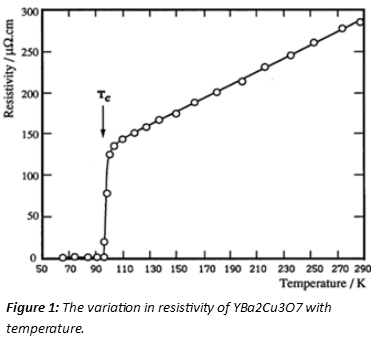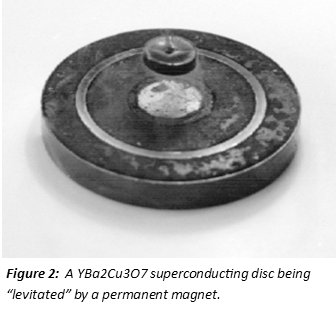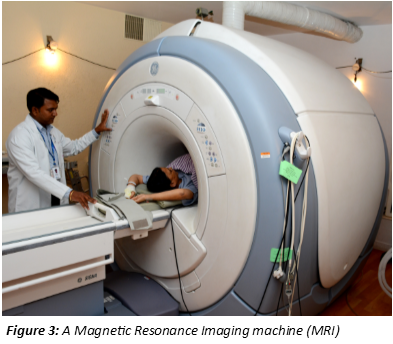What is superconductivity?
In 1911, at Leiden University in the Netherlands, Professor Onnes was cooling down mercury with the newly discovered cryogen, liquid helium, and measuring its resistance. When the temperature reached 4.15 K [-269 °C] the electrical resistance suddenly dropped to zero. After a lot of checking, this result was found to be correct, and the effect was called superconductivity. Many other superconducting materials were discovered over the next 75 years but none of them was found to be superconducting above 23 K [-250 °C].
Discoveries made in the past 25 years have raised superconducting transition temperatures to a much higher value. Scientists at the University of Houston first synthesised a ceramic compound containing yttrium, barium, copper and oxygen, which becomes superconducting at 93 K [-180 °C]. Its chemical formula is YBa2Cu3O7 although the material sometimes loses oxygen.


Figure 1 shows the sudden disappearance of the resistivity of YBa2Cu3O7 on cooling the sample. Other ceramic compounds containing copper also give high transition temperatures. The cuprate superconductor with the highest transition temperature is HgBa2Ca2Cu3O8+d, which shows superconductivity at 160 K [-110 oC] under pressure. These newer ceramic superconductors are known as High Temperature Superconductors, and are superconducting in liquid nitrogen, which is much cheaper than liquid helium - however being ceramics, like a teacup, they are brittle.
Why is superconductivity important?
If you pass a current along a normal copper wire, energy will be lost because the wire has a resistance. If the wire is a power cable this loss is significant. In fact 1.5% of the power generated in the UK is lost in transmission. This is significant but the real problem is that if you do not want your wires to melt you have to dissipate this heat. Superconductors do not have any resistance so there is no heat to dissipate; this means that you can put much more current in the same space. This property of superconductors can be exploited to increase the capacity of cables in the centre of a city, without having to dig up the road.
To make a strong electromagnet you also need a very large current in a small space, therefore, superconductors are very suitable for making electromagnets. Superconductors also have the advantage that once you have a current, they do not use any power. However, superconductors do have disadvantages. You have to cool them down to between –200°C and –269°C, and the high temperature superconductors are brittle ceramics, which means making wires from them is challenging.
Superconducting magnets are used in MRI scanners, mineral separation machines, and recently in high power compact electric motors for powering large ships.

Superconductors interact with magnetic fields in interesting ways, which allows them to be used to make very sensitive magnetic sensors, and high frequency microwave and terahertz receivers. They can also be used for very high frequency electronics and possibly for quantum computing
